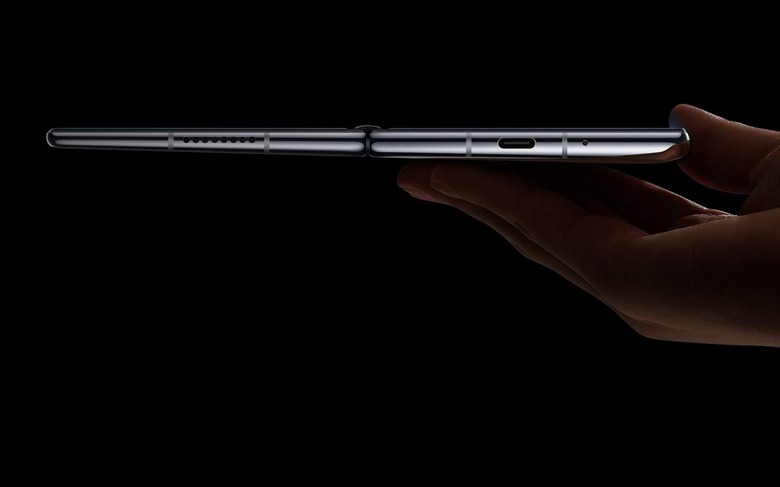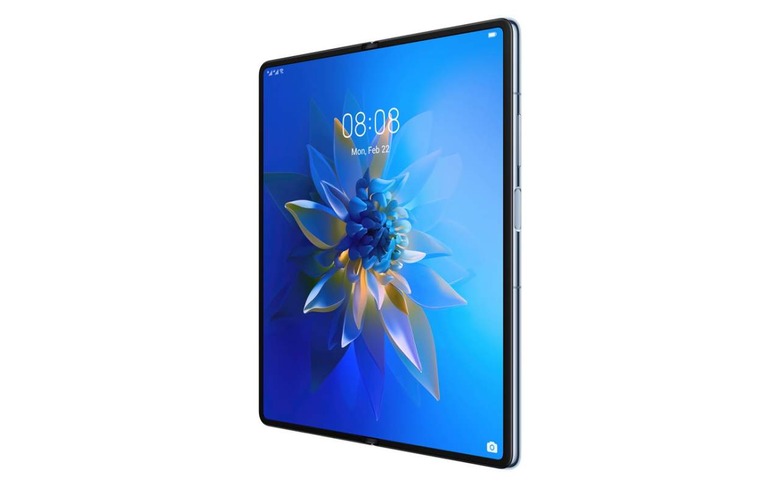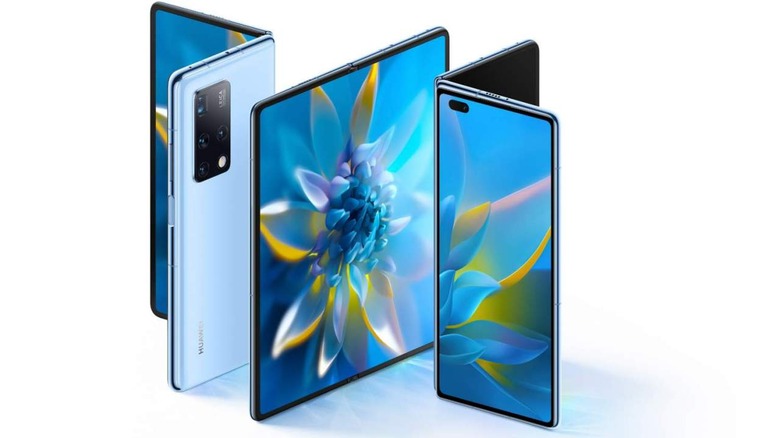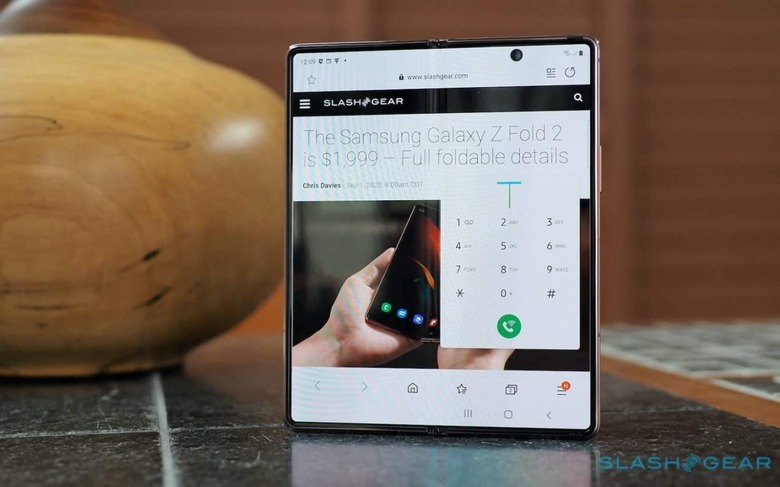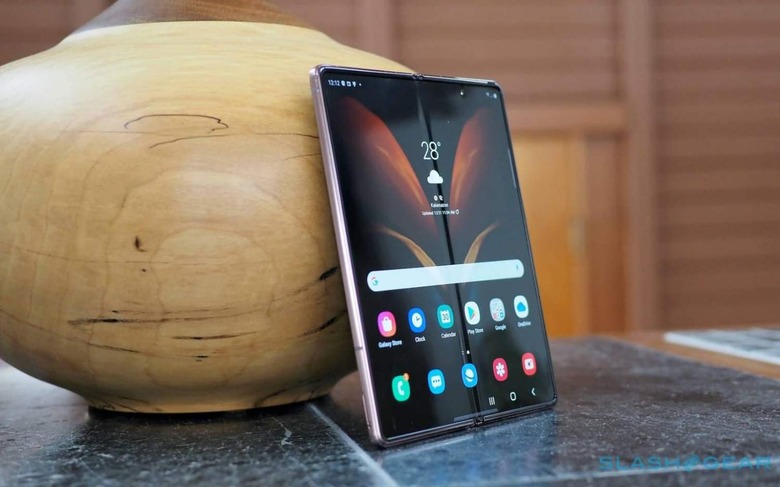Huawei Mate X2 Vs Galaxy Z Fold2: Head-To-Head Comparison
You'd have come to realize by now that foldable smartphones come for a premium. They are a luxury not meant for everyone. That said, the market of foldable phones is fiercely poised with Huawei introducing its third-generation handset in the Mate X2 that delivers a different, sleeker form factor than its predecessor. This new device unfolds an expensive rivalry by knocking at the door of Samsung Galaxy Z Fold2 which, after a head start of five odd months, finally has a competitor.
Galaxy Z Fold2 is not ancient just yet. It is fresh and has the mettle to take on what Mate X2 has to throw at it. Arguably, Samsung's defining handset – that ironed out every glitch of its younger brother – was one of the finest smartphones of the pandemic year, and it wouldn't be easy for Huawei to attain that spot. With the new launch, Huawei – if the manufacturer is able to retail Mate X2 outside of the home country – has a slight advantage with its new form factor and flagship processor powering its guts.
Samsung has been the vanguard of foldable phones, and to safeguard that image, it already has plans of introducing new devices in the Fold and Flip series this year. This will again leave Huawei playing catch up. So before the Koreans take lead, how is the Mate X2 pitted against the Galaxy Z Fold2, let's have a quick look.
Fold and display
Huawei has succumbed to the more appreciated inward folding design. After the outer display design in the previous iterations, the Chinese OEM has now introduced the Mate X2 with a book-like, inward folding mechanism that protects the screen effectively. Though the design is influenced by the Galaxy Z Fold2 you'd say, it is bigger and sleeker in comparison.
The hinge mechanism of both the phones has been meticulously worked, but initial reports suggest that Huawei has minimized the gap between the screens – better than Samsung – with its multi-dimensional hinge. The gap has been reduced in the Galaxy Z Fold2, from its predecessor, but somehow it is noticeable, which the Chinese manufacturer seems to have done better.
On the display front, Huawei Mate X2 features an inward-folding 8-inch OLED panel with 2480 x 2200 pixel resolution and 90Hz screen refresh rate, which is larger than the 7.6-inch flexible AMOLED display – with 2208 x 1768 pixels resolution and 120Hz refresh rate – of the Galaxy Z Fold2. Mate X2 gets a cover display, again similar to its competitor. This is a 6.45-inch OLED screen touting 2700 x 1160 resolution. When folded, the Samsung handset has a 6.2-inch 2260 x 816 pixels cover display.
Despite its larger screen size, Mate X2 is slimmer – weighing only 295 grams; the phone measures 4.4mm at its thinnest point, and 13.6mm when it's folded. The Samsung device, on the other hand, is a tad lighter at 282 grams but it measures 6.9mm when unfolded, and 16.8 mm when closed.
Processing and power
Huawei Mate X2 is powered by in-house Kirin 9000 SoC. Based on the 5nm manufacturing process, the octa-core chipset is clocked at 3.13GHz and is comparable to the power and performance of Qualcomm and Samsung's flagship processors – Snapdragon 888 and Exynos 2100 – respectively.
The Mate X2 is a clear winner with its flagship processor; the Galaxy Z Fold2 is only powered by the comparatively older Snapdragon 865 Plus, which nonetheless offers smooth performance despite very occasional software glitches while multitasking.
The Kirin 9000 in Mate X2 is paired to 8 gigs of RAM and 256 or 512 gigabytes of internal storage. Galaxy Z Fold2 on the other hand has mammoth 12GB of RAM which is accompanied by internal storage options akin to Huawei's smartphone.
You'd expect a robust battery pack to power these interesting devices. Both are powered by the same – 4,500mAh capacity battery – they differ in their quick charging capabilities. The Galaxy Z Fold2 supports 25W fast and 11W wireless charging, the Mate X2 employs SuperCharge adapter to boost its battery with 55W fast charging.
Camera
Samsung has proven its worth in the mobile camera department, Huawei has not been far behind either. The latter has versatile camera setups and the aspect is carried down to the Mate X2 as well. Continuing its Leica partnership, the Chinese smartphone maker has equipped its foldable smartphone with Ultra Vision Leica quad-camera module comprising 50MP primary shooter with OIS and an f/1.9 lens.
Other three cameras in the setup on the back include 16MP ultra-wide camera, 12MP telephoto sensor with 3x optical zoom and OIS, and an 8MP lens capable of 10x optical zoom. Galaxy Z Fold2's cameras are not as enticing. It has only a triple camera setup on the back that includes 12MP primary camera with an f/1.8 lens, 12MP ultra-wide, and another 12MP telephoto sensor with 2x optical zoom.
The phones differ significantly in their selfie cameras. The inner folding display of Mate X2 lacks a selfie camera, which you can find in its rival in form of a 10MP selfie camera. Both have a front camera on the outside – Mate X2 features 16MP sensor, while the Z Fold2 has a 10MP camera.
Software and global approach
Huawei has the upper hand in the design, camera, and power, but in addition to the hardware, the software will help you make the final decision. Mate X2 here is a slight disappointment out of the box. It runs the EMUI 11 based on Android 10, while the Galaxy Z Fold2 is upgraded to run Android 11-based One UI 3.0.
The bigger factor still is that Huawei's foldable smartphone cannot use the Google app ecosystem – no Play Store, YouTube etc. It has to rely on Huawei Mobile Services (HMS) for the apps and other features. Galaxy Z Fold2 offers a complete Google ecosystem experience, which would play in its favor, especially in markets outside of China. Mate X2 will allow sideloading of prominent apps but it's not going to be a full-proof solution to lure in many.
Adding to Huawei Mate X2's limited future in international markets is the uncertainty of whether it will actually release globally. For now, the smartphone is available in China and there is no information on international reveal. The only hopeful fact is that Huawei sold its Mate Xs (second-gen foldable) in select overseas markets, which it would want to achieve again with the Mate X2.
Pricing
This is what the expensive rivalry actually comes down to. Both Samsung Galaxy Z Fold2 and Huawei Mate X2 are very expensive devices, even though there is a stark difference in how much they will set you back. Samsung has priced the Galaxy Z Fold2 at $1,999 and comes in two – Mystic Black and Mystic Bronze – to choose from.
The Mate X2 however starts at a deal-breaking $2,780 (RMB 17,999). If you have the dosh to spend, the phone is available in Crystal Blue, Crystal Pink, White, and Black color options.

